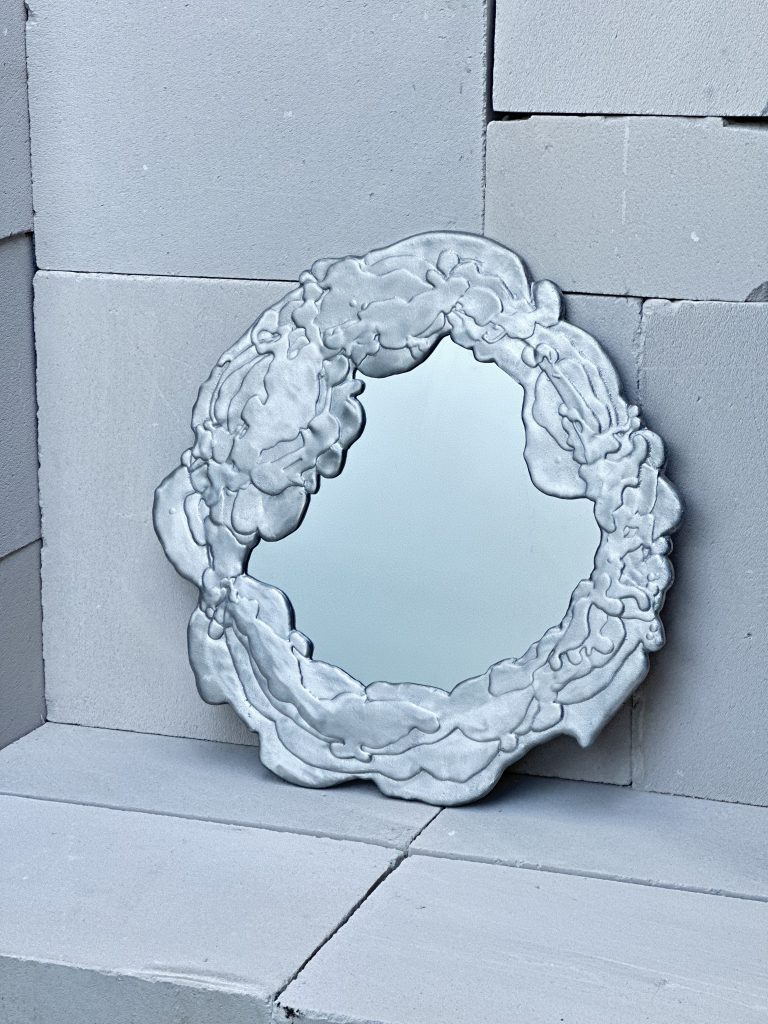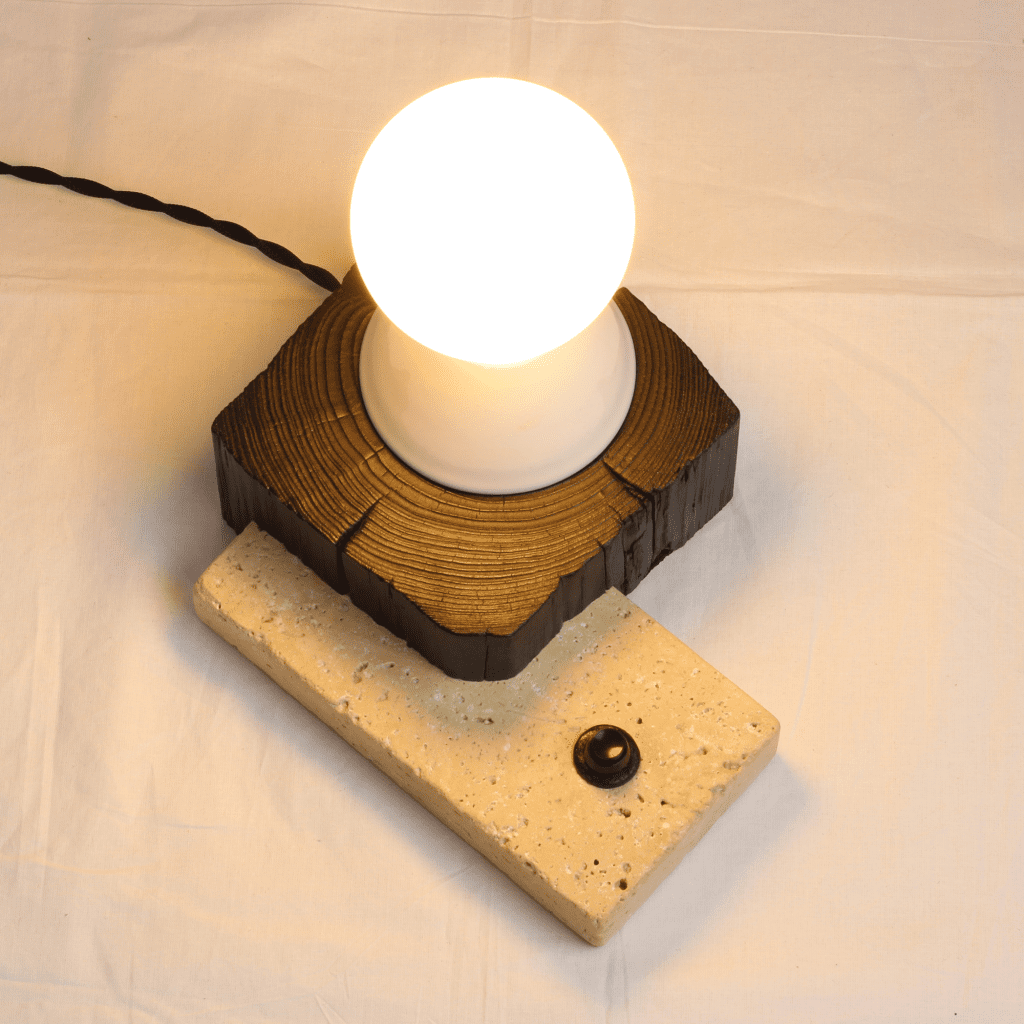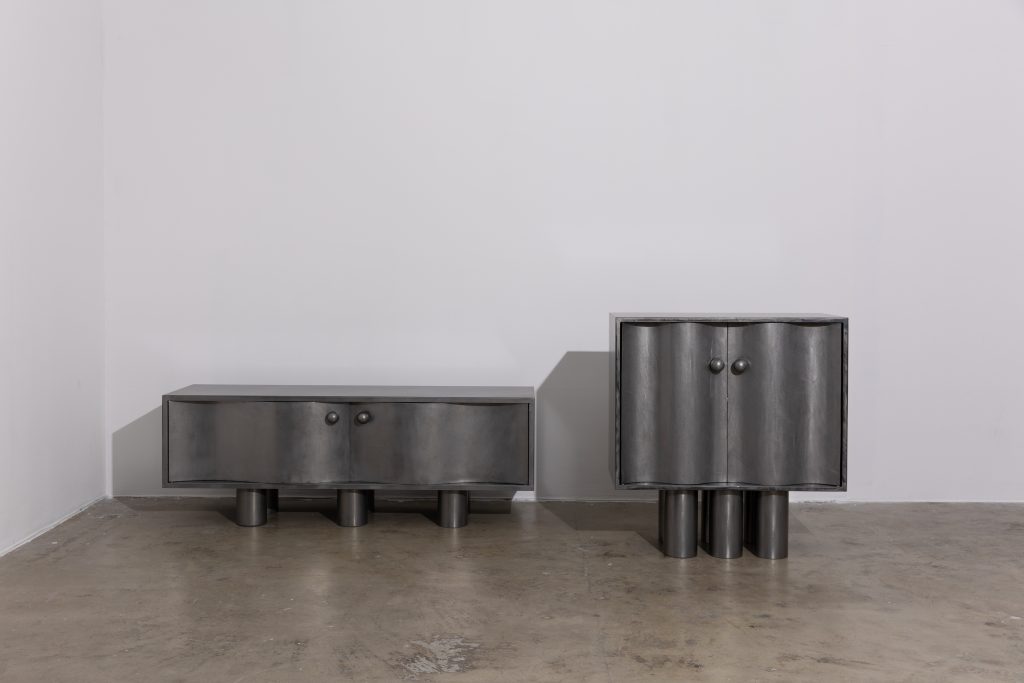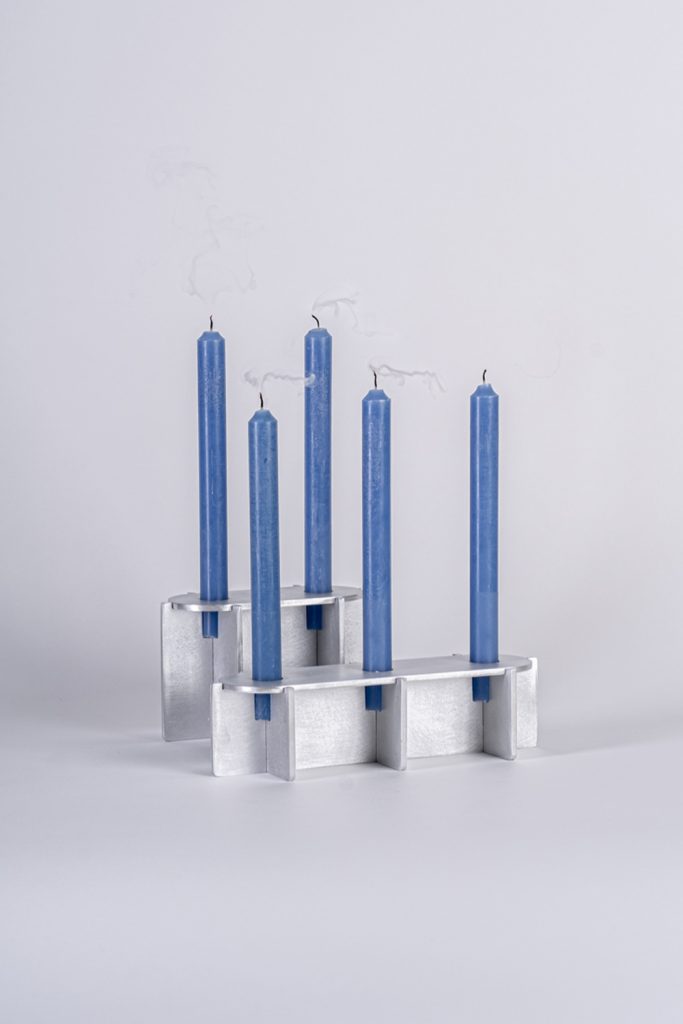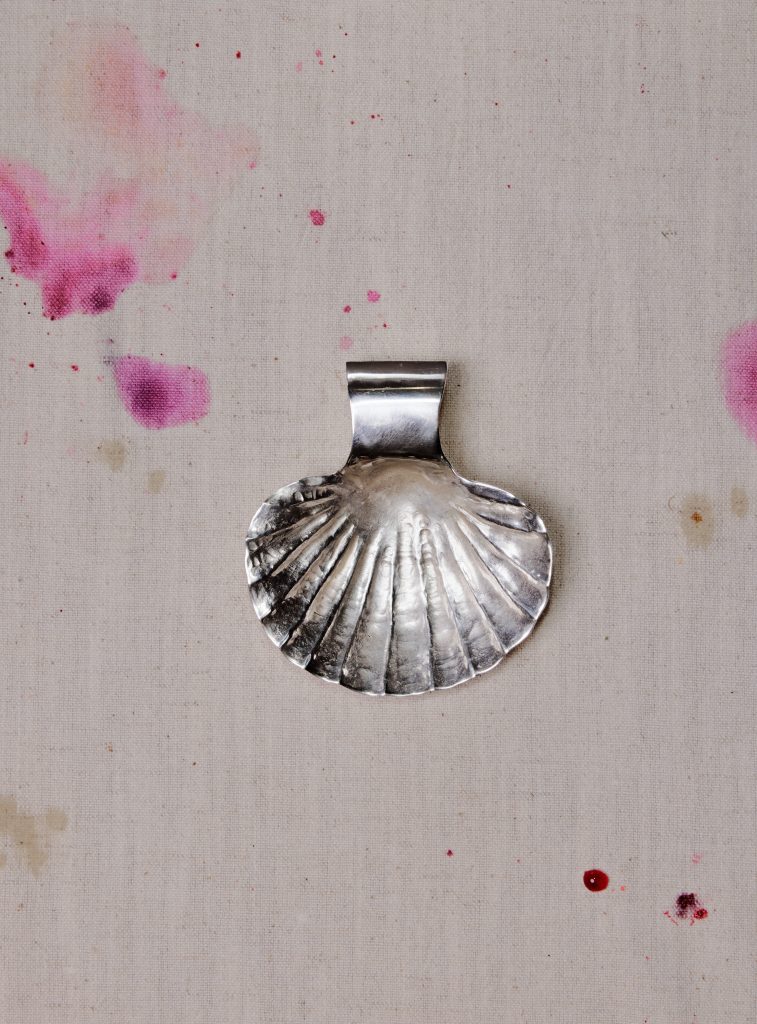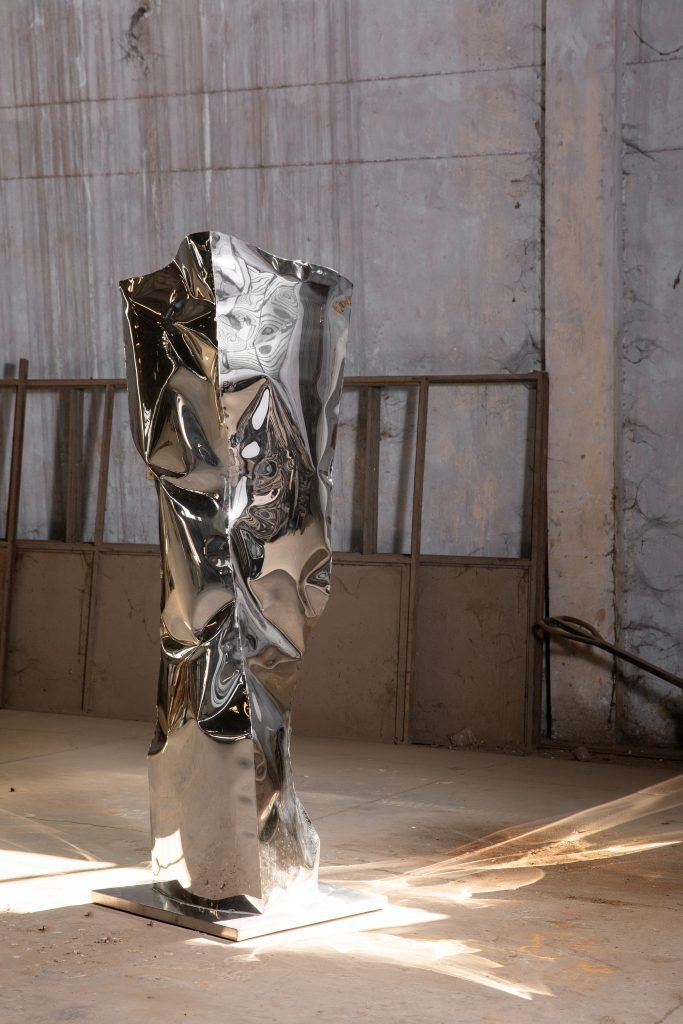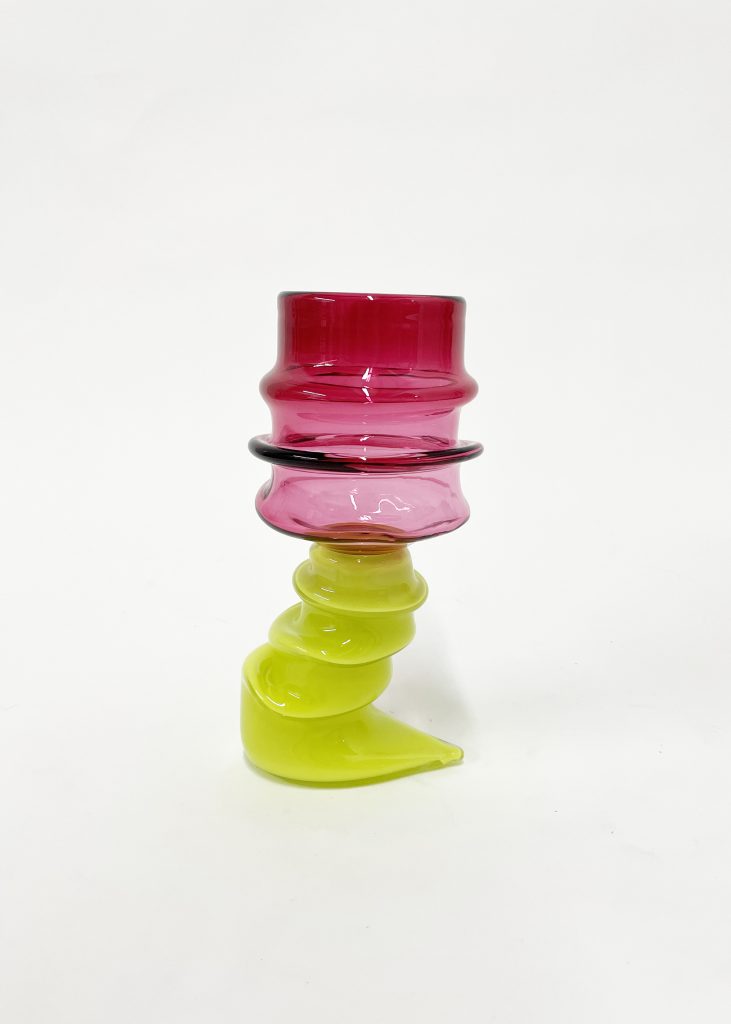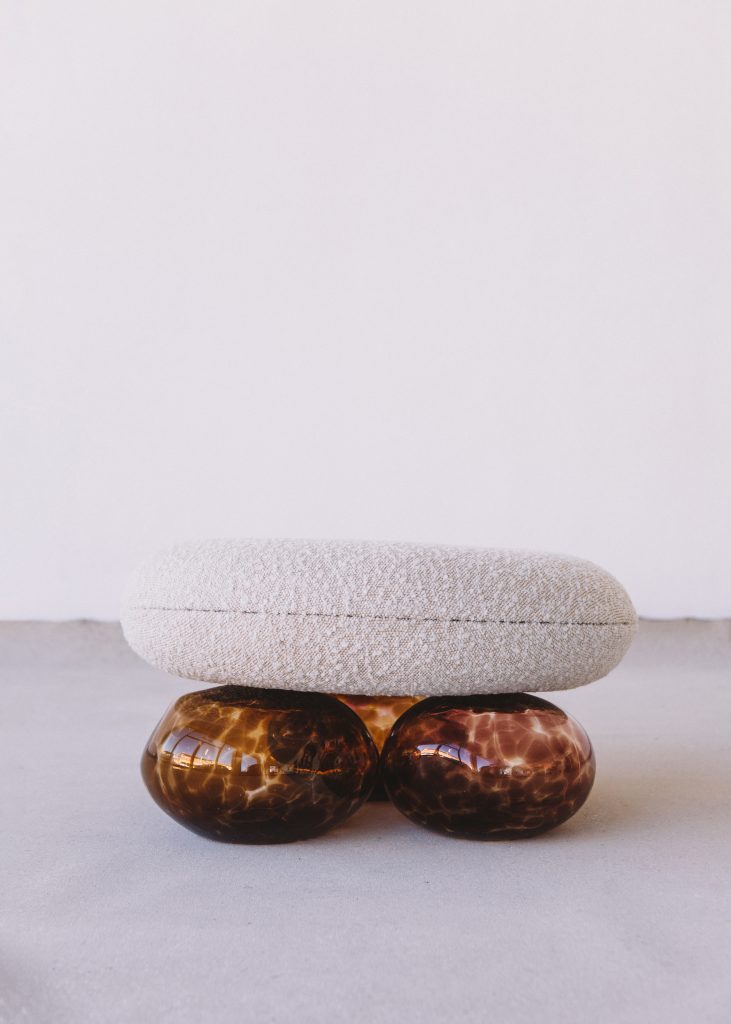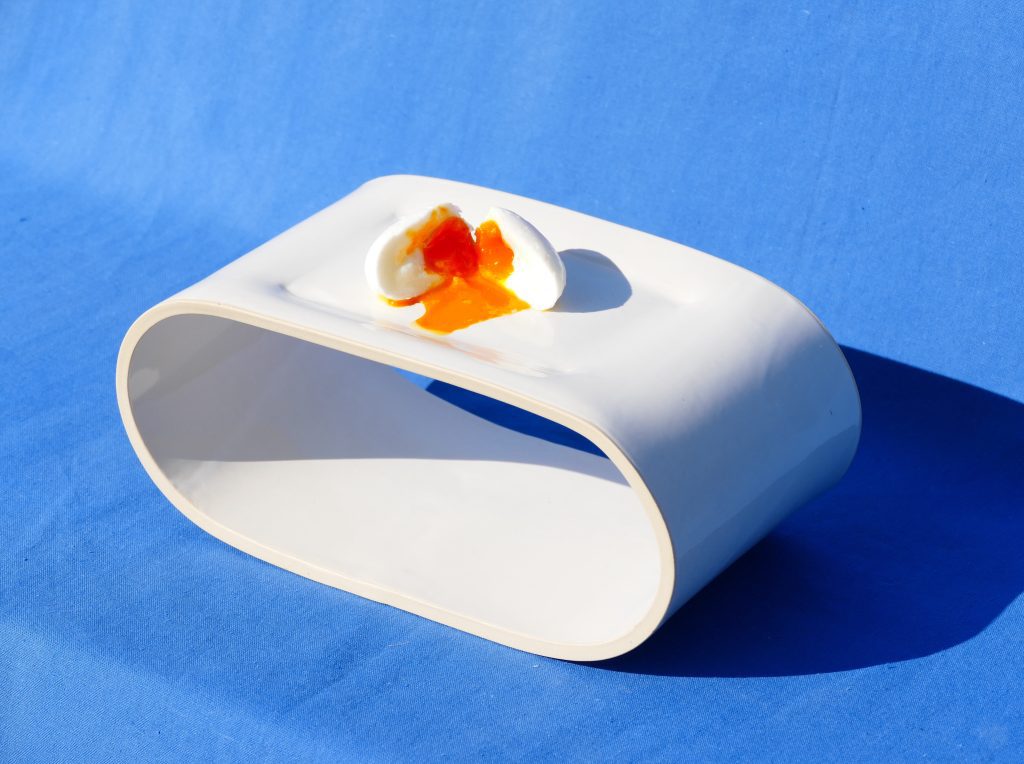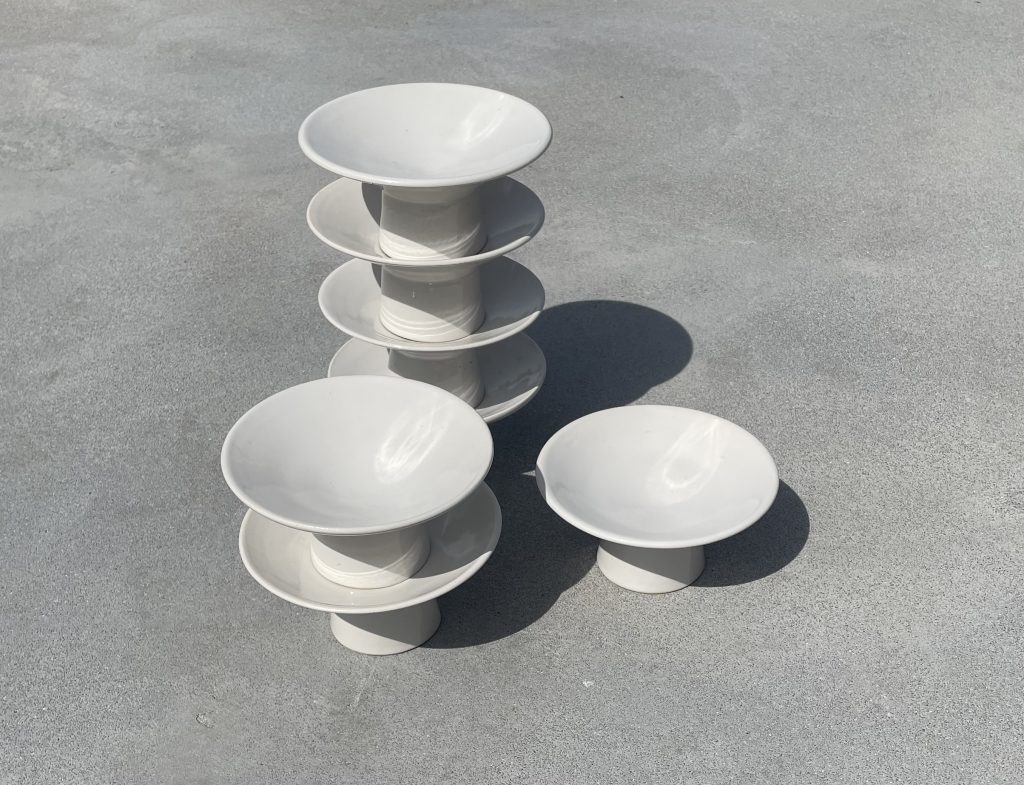
ANIMISM at Alcova 2024: Meet The Makers
This year at Alcova 2024, an inspiring banquet of design awaits as Adorno proudly presents ‘Animism‘. Organized around a dinner table, this exhibition is sure to nourish as you feast on exceptional design that invites the viewer to engage with and reconsider designed objects as animate entities to befriend and respect, rather than material possessions to acquire. So pull up a chair, and get to know your ‘hosts’ – 35 designers from 19 different countries across 3 continents – and remember to bring an appetite when planning your trip to Alcova this year. Buon appetito!
Adir Yakob, Israel
Tel Aviv-based designer Adir Yakob beautifully demonstrates the concept of animism, infusing each of his creations with a soul of its own. Working with a diverse range of materials including epoxy, ceramics, and recycled elements, Yakob approaches design with a sculptor’s sensibility, bestowing upon each piece a vital and distinctive presence. While his designs are radical and daring, Adir remains steadfast in his commitment to crafting functional pieces that resonate with life and energy.
Andredottir & Bobek, Denmark
Designer Josephine Andredottir and artist Emilie Bobek unite as an intuitive duo, delving into a myriad of materials—from wood and plaster to metals and jesmonite. For them, this exploration serves as the very foundation of their creativity, igniting their imaginations and fueling their artistic endeavors. Inspired by the unique qualities of each material, Andredottir & Bobek breathe life into their creations, creating functional stools and mirrors alongside decorative wall pieces and sculptural side tables. Each piece bears the imprint of their shared passion for experimentation and innovation.
Edoardo Lietti, Denmark
Based in Denmark, Edoardo Lietti stands out as a versatile designer, celebrated for his ingenuity and woodworking prowess. Infusing a dash of Bauhaus inspiration into his lamps, tables, and chairs, his designs merge a modular, adaptable essence with a whimsical touch. It is Lietti’s subtle, humorous touch that sets his work apart, infusing a lively spirit into his otherwise minimalist, historically-rooted approach. Through his artistry, Lietti not only pays homage to history but also breathes new life into it, instilling it with a sense of joy and spontaneity.
Eero Moss, Romania
At the core of Romanian designer, Tiberiu Cojocaru’s design philosophy lies a deep reverence for natural materials and the intricate geological processes that sculpt them. Inspired by the textures and patterns born of erosion, Eero Moss creations bear the unmistakable imprint of nature’s enduring intrigue. Through his artistry, Cojocaru invites viewers to embark on a journey, where the soul of the natural world inspires the boundless potential of human imagination.
Federica Paglia, Italy
Federica Paglia is drawn to creating multidimensional pieces with strong narrative characters. Paglia’s work is a testament to the harmonious interplay between art, decoration, and design. Through a thoughtful process rooted in the observation of everyday life, she breathes new life into simple, ceramic forms, blurring the lines between content and container. Through her work, she invites viewers to explore the intricate interplay between form, function, art, and utility, inviting them into a world where boundaries blur and creativity thrives.
Francesc Gasch Studio, Spain
Francesc Gasch’s design philosophy centers on a harmonious collaboration between craftsperson and designer, drawing from the rich manufacturing heritage of Catalunya and Europe. Through close partnerships with local artisans, Gasch ensures technical excellence and fastidious attention to detail in his creations. Gasch’s commitment extends beyond craftsmanship to sustainability, with a focus on minimizing carbon footprints and promoting lean, local production methods. His products are built to last, embodying the essence of sustainable design while leaving a positive impact on users and the environment alike.
Gábor Góbi, Hungary
Gábor Góbi views creation as a journey of discovery, guided by the present moment and the inherent potential of each object. Committed to environmentally harmonious design, Gábor crafts soulful pieces that emanate an organic, vibrant energy, akin to a living presence in your space. Góbi envisions a world where sustainable lifestyles are accessible to all, considering this mission a profound responsibility and privilege, driving meaningful change. Items crafted under gobi.design participate in nature’s eternal cycle, drawing inspiration from upcycling, hygge, wabi-sabi, slow living, and degrowth movements.
Georgiev Zabeta, Bulgaria
Georgiev Zabeta is a dynamic multidisciplinary practice led by Kiril Georgiev and Elina Zabeta, both architects by training. Operating at the intersection of architecture, art, theory, research, and beyond, the duo is dedicated to crafting unique responses to intricate real-world challenges. Offering a comprehensive suite of services spanning bespoke architecture, interior design, custom-made furniture, and collectible design, Georgiev Zabeta is committed to producing contemporary pieces rooted in traditional craftsmanship while remaining firmly anchored in the present.
Giacomo Tomazzi, Brazil
Drawing inspiration from architecture, art, nature, and Brazilian culture, Giácomo Tomazzi seeks to infuse his creations with a narrative that reflects his continuous exploration of new production processes, materials, and lifestyles. At the heart of his design philosophy lies a belief that design is a powerful storytelling tool, each item telling a story of it’s own. With thorough attention to detail, Tomazzi imbues his designs with personality and elegance, characterized by the innovative use of raw materials, functionality, minimalist aesthetics, and unconventional compositions. Operating from São Paulo, Giácomo Tomazzi Studio champions the convergence of industrial production with artisanal techniques, resulting in products alive with a distinct Brazilian soul.
The Good Living Co., Poland
Based in Poland, The Good Living Co. epitomizes the art of impeccable craftsmanship and the essence of refined living. As a small family-run venture, The Good Living Co. takes pride in creating minimalist but warm and lively designs that carry an inviting presence. Utilizing sumptuous textiles and lavish materials, every creation is thoughtfully crafted to awaken a feeling of indulgence and refinement, ultimately reshaping the very notion of good living.
Hasik Design Studio, Poland
Specializing in interior design and the production of high-quality bespoke objects, Hasik Design Studio is helmed by the creative duo, Grzegorz & Tomasz. Their design philosophy revolves around durability and timelessness, crafting items with care from quality materials that are meant to serve for years and be passed down through generations. All objects produced by the studio are based on archetypal forms such as circles and rectangles, with simple joinery techniques. Hasik Design honors the intrinsic essence of materials, revering the natural beauty of wood and stone, embracing the subtle transformation of metals over time—a gentle reminder of life’s natural ebb and flow. Hasik Design Studio’s products engage the senses, creating an atmosphere of tranquility and contemplation.
Isabel Moncada, Mexico
Through her dedicated exploration and implementation of ancient techniques of artisan manufacturing, Isabel Moncada has developed an array of crafts, invented mechanisms, and transformed materials to elevate the performance, quality, and design of her pieces. Her lighting fixtures feature Mid Century Modern and Art Deco style with traditional craftsmanship, utilizing unique materials such as bronze and blown glass to achieve a standard of excellence unmatched in the industry. Embodying a unique approach that combines art, engineering, mechanics, and 3D modeling, Moncada’s creations stand as timeless reflections of her passion and dedication to her craft.
Jacob Egeberg, Denmark




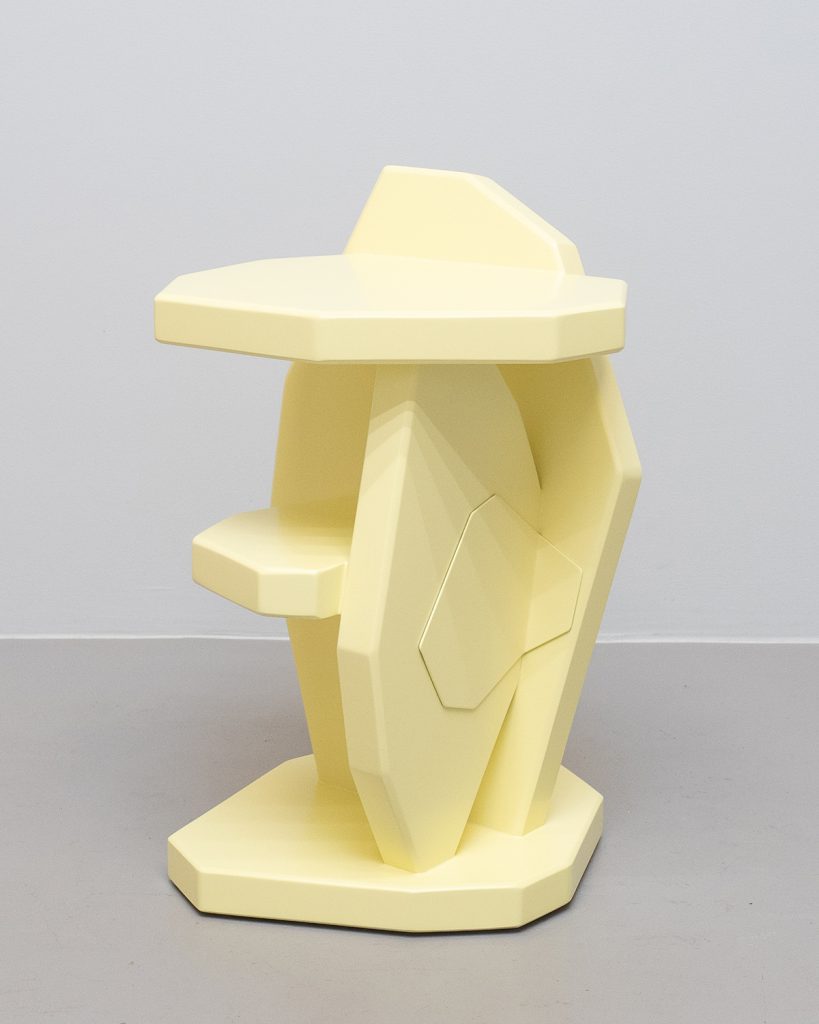

Copenhagen-based designer Jacob Mathias leads Studio Jacob Mathias Egeberg, celebrated for its vibrant and unconventional touch in both domestic interiors and retail design spaces. Infused with a playful energy, Egeberg’s creations are characterized by their light and buoyant essence. Challenging boundaries of modern design, he specializes in using industrial processes and materials in a distinctive and colorful manner, crafting functional items that not only serve a purpose but also narrate compelling stories.
Julia Chiaramonti, France
Julia Chiaramonti, a Franco-Italian designer born in Paris, embarked on her creative journey after studying at the Camondo Interior Design School in her hometown. While initially pursuing a career in interior design, she naturally gravitated back to her first love: design. Infused with ambition and influenced by her Italian heritage, Julia designs objects characterized by clean, minimalist lines and prestigious materials such as stainless steel and marble, reflecting her cultural background and design ethos.
LESORR, Canada
David Raymond, a Montreal-based product designer, specializes in transforming common and aesthetic objects with a blend of urban, graphic, and natural inspirations. His radical designs maximize the physical characteristics of materials, challenging conventional distinctions between art and industrial objects. LESORR offers a range of objects characterized by a reverence for raw materials such as steel and wood, and a focus on optimizing user experience through thoughtful design.
Lilli Malou Weinhold, Germany
Lilli Malou, a German artist and designer based in Düsseldorf, finds her passion in handmade design, craftwork, and the exploration of new materials. Viewing design as a playful and subtle means of sparking meaningful dialogues, she embraces an interdisciplinary approach by immersing herself in various disciplines and workshops. Her recent collection, “Dig In,” beautifully embodies the concept of animism, where traditional eating utensils are reimagined to foster a deeper connection between the user, the utensil, and the food, encouraging a more complete engagement with the act of eating.
Lucas Gutierrez, Germany
Lucas Gutierrez combines traditional textile craftsmanship with cutting-edge digital design, blending the tactile richness of tapestries with the boundless exploration of digital sculpture. Based in Berlin, Gutierrez creates pieces that serve as a dialogue between past and present, offering a modern interpretation of ancient craftsmanship while pushing the frontiers of form and materiality through digital aesthetics. Working primarily with textiles, glass, and ceramics, Lucas Gutierrez studio narrates stories of digital culture through high-quality design and artistic expression. Although his narratives frequently explore contemporary societal anxieties and dystopias, they are conveyed through a vivid and lively metaphysical perspective.
Lyk Carpet, Germany
Mareike Lienau, the creative force behind Lyk Carpet, prioritizes empathy and sensitivity with a process-oriented design approach. She reimagines projects to unlock their full potential, addressing pressing questions in design such as contemporary craft and decolonial ecology. Lienau fosters intercultural connections through Lyk Carpet, integrating traditional techniques and involving stakeholders in collaborative efforts. Her designs evoke emotional connections, prompting reflection on responsible design choices and socio-ecological aspects. Through innovative approaches, Lienau’s designs are interactive pieces that invite viewers to experience and connect on a deeper level.
Nicolas Erauw, Belgium
Based in Belgium, Nicolas Erauw draws inspiration by exploring the intersections between industrial manufacturing processes and raw materials. His design ethos is characterized by radical, brutalist, and neo-industrial influences, infusing his creations with a distinctively avant-garde aesthetic. Erauw’s work seeks to evoke unexpected and thought-provoking results through his experimental approach. His innovative approach often result in creations that embody a unique blend of functionality and artistic expression.
Nitush & Aroosh, India
Based in India, brothers Nitush and Aroosh have forged a new language of design through their sculptural stainless steel creations. Utilizing a unique hydroforming technique, they shape dynamic forms that offer new ways to consider beauty and functionality. With precise handwork, Nitush and Aroosh infuse each piece with an intriguing tactile quality, encouraging viewers to explore the interplay of light, shadow, and texture.
With their reflective qualities, the works effectively merge with their surroundings, blurring the boundary between art and environment as the surroundings become an integral part of the artwork itself.
Olle Sahlqvist, Sweden
Based in Stockholm, Olle Sahlqvist tackles the pressing issue of the climate crisis. He advocates for a deeper connection with nature in order to foster empathy towards it. His radical designs, characterized by rustic, and biophilic elements aim to evoke a stronger relationship with natural materials, emphasizing the importance of nature’s well-being. Through his work, Sahlqvist beautifully incorporates the concept of animism, forging a deeper connection between individuals and the materials used in their possessions. By nurturing this connection, he encourages a sense of respect and sustainability, promoting the idea that by understanding and appreciating the essence of our possessions, we can use them more sustainably.
Pani Jurek, Poland
Pani Jurek, founded by artist and designer Magda Jurek, embodies a conceptual approach to design rooted in her background in painting. Her aim is to create products that defy convention, offering versatility and sparking creativity. With a strong commitment to sustainability, Jurek advocates for responsible design practices. Additionally, she co-founded the Association “Based in Warsaw,” dedicated to promoting social design and enhancing public spaces through innovative design solutions. Her designs are characterized by a whimsical, maximalist, and exuberant touch, infusing spaces with personality and playfulness.
Paul Mckee, United States
In sunny Los Angeles, Paul McKee showcases his mastery of craftsmanship, creating pieces that are as functional as they are aesthetically appealing. Working primarily with wood, McKee artfully integrates minerals, gemstones, leather, glass, and antique metals to create his signature aesthetic. This intricate interplay between organic materials and manufactured elements defines his unique style, elevating each creation to a work of art.
Project 213A, Portugal
Project 213A, established in 2020 by four friends with a shared design ethos, officially launched in September 2021. Their mission is to create timeless furniture and home accessories that embody modernity while championing sustainability. Infusing their designs with the essence of their mission and passion, their creations enliven the spaces they inhabit with a vibrant energy and soulfulness. Each item is carefully crafted in handpicked Portuguese factories and family-run workshops, underscoring their dedication to responsible manufacturing and waste minimization.
Riccardo Cenedella, Italy
Riccardo Cenedella’s design ethos, deeply influenced by the concept of the “bricoleur,” resonates with the animistic perspective, which sees objects as imbued with a spirit or essence. By repurposing materials such as discarded Murano glass and paper and textile waste from temporary events, and breathing new life into them through his creations, Cenedella infuses his designs with a sense of vitality and connection to the natural world. In his hands, these materials undergo a transformation, evolving from mere waste into objects with a renewed purpose and presence, echoing the animistic belief in the inherent agency and interconnectedness of all things.
SCATTER.D, Italy
SCATTER.D STUDIO, led by Bahar Pourmoghadam and Marco Cattivelli, operates at the intersection of product design and architecture. With a focus on both industrial design and craftsmanship, the studio embraces artisanal production as a means of adding narrative depth to their creations. Pourmoghadam and Cattivelli view fabrication as a way to explore the interactions between people and objects, delving into the multiple layers of meaning embedded within each piece. They are particularly drawn to cross-disciplinary collaborations and the exploration of forgotten techniques, believing in the value of uncertainty and the continual evolution of ideas.
Sabastião Lobo, Portugal
Sebastião Lobo, based in Lisbon, is a jeweler and concept artist known for his innovative approach to sculpture, plastic arts, and scenography. His work is characterized by fluidity and radical innovation, evident in creations like wire sculptures capturing animal silhouettes and minimalist jewelry pieces. Notable projects include repurposing plastic bottles into sculptures for the Oceano Azul foundation and crafting a fiberglass shark skeleton for the +351 shop, showcasing his commitment to sustainability and artistic expression.
Stem, India




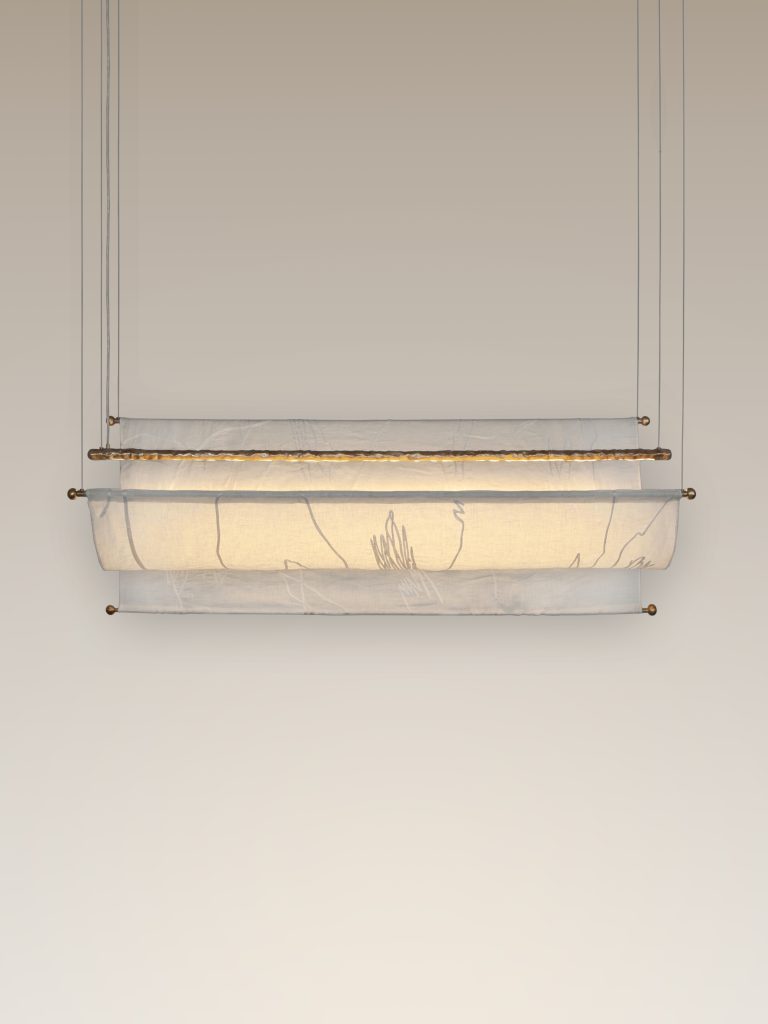

Stem, a contemporary Indian product design studio led by Aman Bhayana and Sugandhi Mehrotra, is dedicated to producing handcrafted objects for the home. With a focus on storytelling, Stem aims to evoke a profound connection with each product, naturally integrating art into everyday living. Their sustainable designs honor traditional craftsmanship, showcasing precise attention to detail and a touch of individuality in every piece. Stem’s creations are built to last, gracefully aging over time and becoming bearers of stories that connect generations and inspire throughout lifetimes.
Sticky Glass, United States
Grace Whiteside of Sticky Glass is an interdisciplinary glass and performance artist whose unique perspective delves into the materiality of glass. They are drawn to glass for its transitory characteristics, seeing it as an amorphous solid that reflects their fluid identity. Celebrating glass’s imperfections, Whiteside creates designs that embrace its goopy, tacky, and bubbly qualities. Their work challenges heteronormative architecture and design, fostering inclusivity for free-thinking individuals. With skills in navigating social dynamics and allowing glass to speak for itself, Sticky Glass explores the boundaries of glass as a medium while engaging in a broader dialogue about identity and materiality.
Studio MOTO, Belgium
Studio MOTO Architects, founded in 2017 by Mo Vandenberghe and Thomas Hick, emerged from a close collaboration at Robbrecht en Daem architects. Fueled by a passion for design, they strive to strike a balance between the familiar and the daring. Their approach involves thorough analysis and research, considering spatial, cultural, and historical contexts. Their debut furniture collection, Stack, embodies this ethos, offering a playful yet practical solution born out of their own necessity. Designed to adapt and evolve, Stack features minimalist, stackable aluminum components that can be configured into various furniture pieces, reflecting their commitment to both functionality and timeless design.
Studio S II, United States
Studio S II, co-founded by longtime collaborators Erica Sellers and Jeremy Silberberg in 2020, explores unconventional design territories with a playful and provocative approach. Specializing in blown glass and metalwork, their designs incorporate elements of kink, futurism, queerness, and science fiction. Through their creations, they invite viewers to engage with objects in multifaceted ways, infusing each piece with a distinct cinematic and narrative quality.
Szklo Studio, Poland
Szkło, meaning “glass” in Polish, is a collection of functional glass sculptures and design objects hand-blown by Aleksandra Zawistowska and her team of craftsmen. It’s a celebration of materials and the glassblowing process, where each piece is unique, born from a playful experiment rather than traditional molds. Szkło challenges conventional glassblowing to create coincidental, spontaneous forms, emphasizing the importance of the process itself. The mission of Szkło is to push the boundaries of functionality and material characteristics, turning everyday activities like eating and drinking into unique experiences.
Togigi, Belgium






In a world often consumed by fleeting interactions, TOGIGI celebrates exceptional moments that catch one off guard but resonate deeply. TOGIGI’s belief that design possesses the power to evoke such connections, serves as the foundation of their work. Balancing on the verge of art and technology, the core belief at TOGIGI is steadfast: design forges lasting connections. Crafted at the intersection of art and science, fantasy, and reality, it is important to embrace these pieces with an open heart and inquisitive spirit.
Worn Studio, Spain
Worn Studio, based in Spain, specializes in furniture and product design. Founder and designer Natalia Ortega focuses on objects, furniture, and lighting. Her creations, made from materials like clay, wood, wicker, wool, embroidery, stone, forge, leather, and blown glass, emphasize slowness, intention, and respect for natural resources. Through contemporary designs, Natalia raises awareness of our connection to both the environment and inanimate objects.
ZANAMIZO, Switzerland
ZANAMIZO, which translates to “for the table” in Slovene, is renowned for its handmade ceramic tableware, embodying craftsmanship and functional artistry. Founded by Kristina Pucko in the Swiss countryside, each piece is intentionally made to enhance dining experiences with perceptual depth and playfulness. Using traditional ceramic techniques and high-fired stoneware clay, ZANAMIZO’s pieces are durable for everyday use and professional gastronomy, offering a unique blend of artistic expression and practicality to elevate dining experiences.
Browse Designs Featured in Animism at Alcova2024
-

 Trn / Model F1 Ceramic Pendant Light
Trn / Model F1 Ceramic Pendant Light -

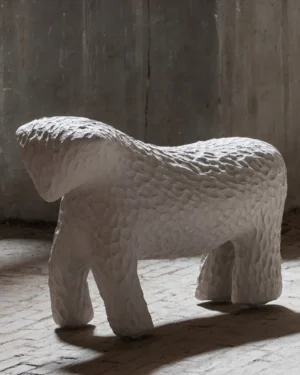 Volyk – Hand Sculpted Bench
Volyk – Hand Sculpted Bench -

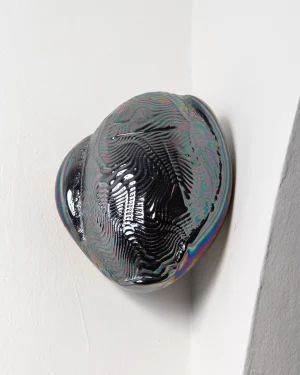 Kairo – Handblown Glass Decor
Kairo – Handblown Glass Decor -

 Orca – Hanging Lamp
Orca – Hanging Lamp -

 Nour – Table Lamp
Nour – Table Lamp -

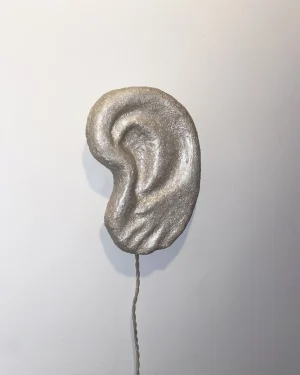 Vox – Wall Lamp
Vox – Wall Lamp -

 Disguise Series 00 – Stool 02
Disguise Series 00 – Stool 02 -

 Eyes – Salt And Pepper Shakers
Eyes – Salt And Pepper Shakers -

 Chastity – Metal Grid and Blown Glass Wall Sconce
Chastity – Metal Grid and Blown Glass Wall Sconce -

 Disguise Series 00 – Chair 01 Off White
Disguise Series 00 – Chair 01 Off White -

 Lips Candle Holders – Porcelain
Lips Candle Holders – Porcelain -

 Talkies No.01 – Sculptural Stoneware Vessel
Talkies No.01 – Sculptural Stoneware Vessel -

 Ocellus – Kiln Formed Glass Mirror
Ocellus – Kiln Formed Glass Mirror -

 The Voguing Lamp 1 – Scrap Aluminum
The Voguing Lamp 1 – Scrap Aluminum -

 RyŌan-ji – Black And White Wool Rug/wallhanging
RyŌan-ji – Black And White Wool Rug/wallhanging -

 Horned Majesty – Teak Wood / Fur Chair
Horned Majesty – Teak Wood / Fur Chair -

 Hartleder – Sustainable Cowhide Chair
Hartleder – Sustainable Cowhide Chair -

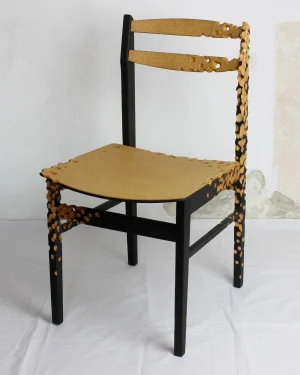 N1 Chair
N1 Chair -

 Sedia 1 – Mirror Polished Stainless Steel Chair
Sedia 1 – Mirror Polished Stainless Steel Chair -

 Barklamp
Barklamp -

 Evil Eye Glass Mirror – Large
Evil Eye Glass Mirror – Large -

 Inter – Side Table
Inter – Side Table -

 Beings No.05 – Sculptural Ceramic Vessel
Beings No.05 – Sculptural Ceramic Vessel -

 Heads — Cast Bronze Sculpture
Heads — Cast Bronze Sculpture




